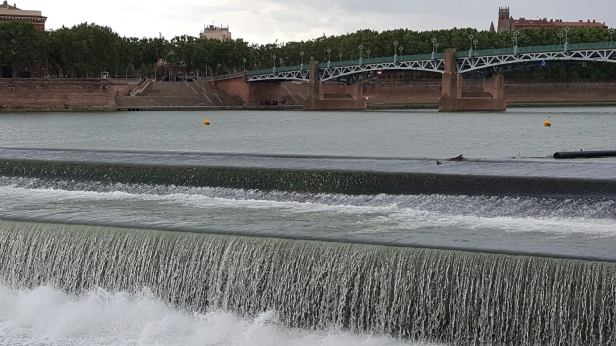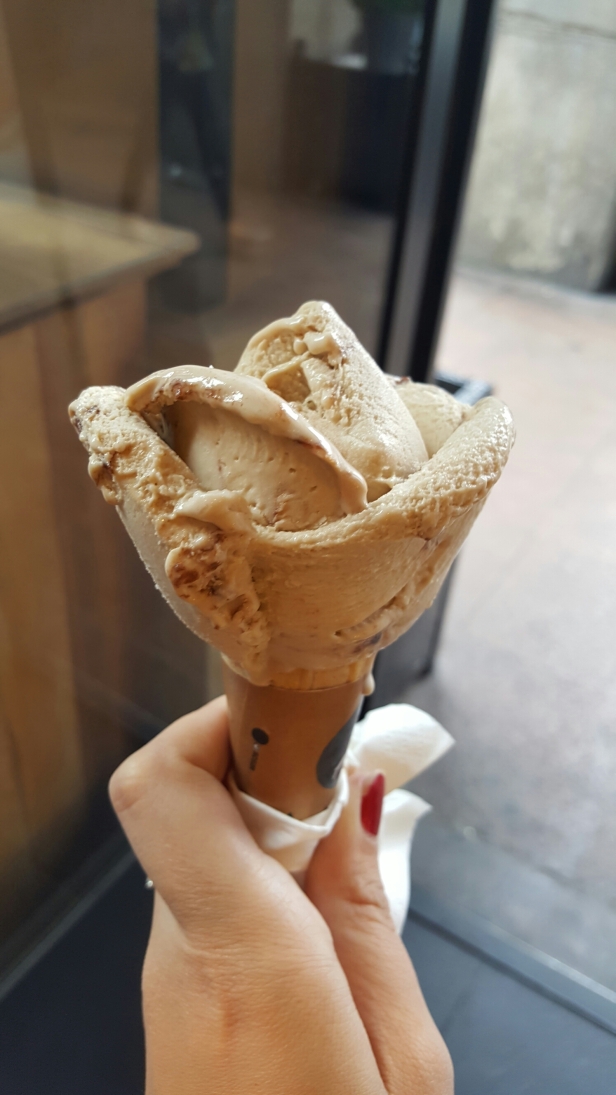Our afternoon turned out much the same as our morning! In keeping with the French tradition of flâneurs, people who walk around the city just for the fun of seeing what’s going on, we spent our afternoon continuing to explore and shop around.
We stopped by St. Sernin, the medieval basilica on Rue du Taur. A basilica means that church has been granted special status by the pope because it is historically or spiritually significant in some way. Built in the 1100s, this church used to be the cathedral for the local diocese (Catholic neighborhood), but now another church holds that honor since each diocese is only allowed to have one cathedral, but can have as many basilicas as the pope wants to recognize there. The inside is beautiful and largely made out of the famous rose bricks and marble with dark wooden accents, as you can see in the picture at the top of this post.
From there we headed west towards the Garonne River. Many French cities are built on big rivers, and Toulouse is no exception. They also typically have a Pont Neuf, or Old Bridge (which, despite the name, is not always the oldest bridge in town) like this one.
But the bridge we used the most often was the Pont Saint Pierre, seen here. This bridge is so important it has actually been built twice: once in 1849 and then again in 1927. It was redesigned to its current form in 1987 (as the ’27 bridge was a suspension bridge). The waterfalls at the bottom of the picture are used to generate hydropower for the city, helping reduce their dependence on nuclear power (the most common power source in France).
Finally, we ended the day with dinner and celebratory ice cream from a shop we’ve been eyeing since we got here. Toulouse is known as “the Rose City”, so this shop shapes their carnets de glace (ice cream cones) to look like a rose! They were so pretty to look at but a little messy to eat, since all the petals dripped down the cone at once. Still, it was well worth it! French ice cream is substantially different from American ice cream because it is made from an egg custard base, not just cream; this makes the final product much richer and smoother (since the ice crystals cannot get as large). The closest version we have in the United States is gelato, which is made from a mix of egg custard and milk. Imagine a thicker type of gelato and you’ll have some idea of what French ice cream tastes like.
Today’s comments section winner is…Zoe! Nice job keeping up with all the posts! Tomorrow we leave Toulouse (already! Can you believe it?) and head into Spain for the first time. It’ll be several long train rides – first to Narbonne, France; then Madrid, Spain; then finally into Salamanca, Spain. Be on the lookout for posts from each stop as well as from the train itself!





Wow!
LikeLike
WOW! I’ve never seen ice cream that decorated and designed
LikeLike
Why are all foods in France designed!
LikeLike
I like the bridge
LikeLike
Je veux aller la France
LikeLike
France est beau
LikeLike
That ice cream looked good!
LikeLike